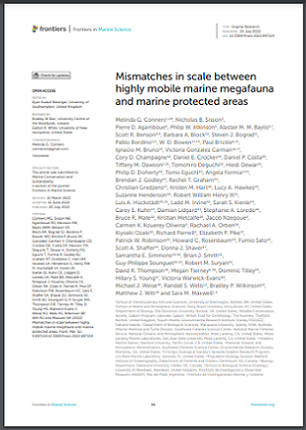
Marine protected areas (MPAs), particularly large MPAs, are increasing in number and size around the globe in part to facilitate the conservation of marine megafauna under the assumption that large-scale MPAs better align with vagile life histories; however, this alignment is not well established. Using a global tracking dataset from 36 species across five taxa, chosen to reflect the span of home range size in highly mobile marine megafauna, we show most MPAs are too small to encompass complete home ranges of most species. Based on size alone, 40% of existing MPAs could encompass the home ranges of the smallest ranged species, while only < 1% of existing MPAs could encompass those of the largest ranged species. Further, where home ranges and MPAs overlapped in real geographic space, MPAs encompassed < 5% of core areas used by all species. Despite most home ranges of mobile marine megafauna being much larger than existing MPAs, we demonstrate how benefits from MPAs are still likely to accrue by targeting seasonal aggregations and critical life history stages and through other management techniques.














